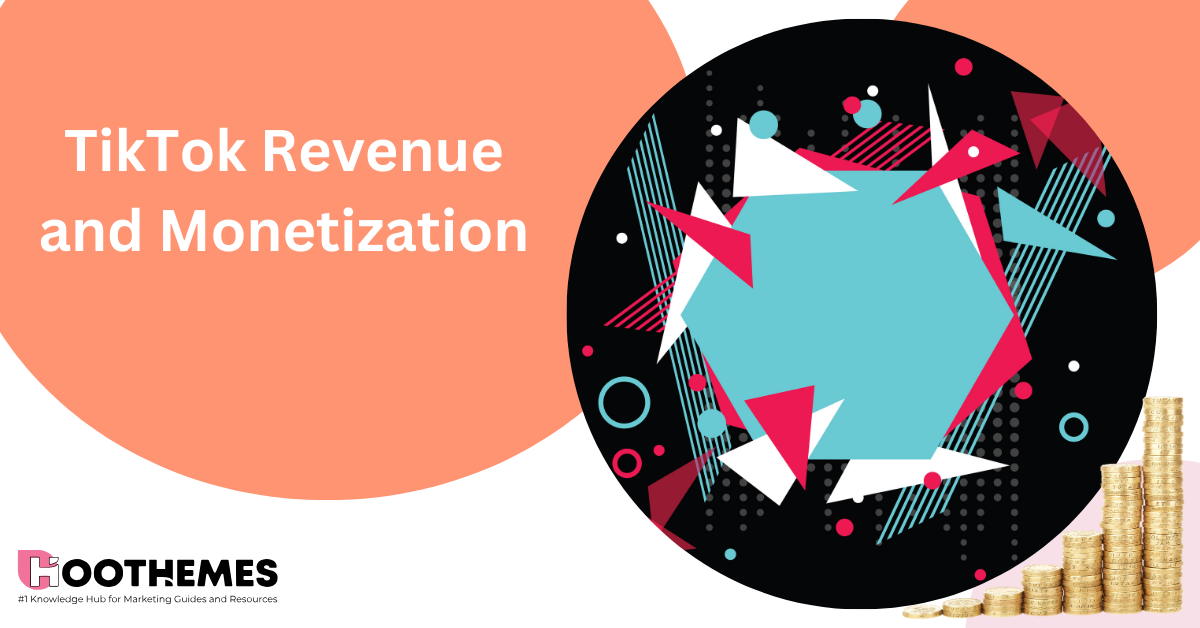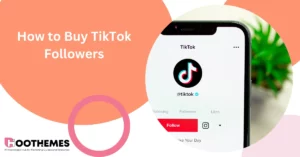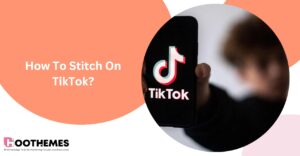Introduction:
TikTok, the popular short-video platform, has experienced rapid growth in revenue, particularly from advertising, over the past few years. In this article, we’ll explore TikTok revenue projections, main revenue sources, and how users can earn money on the platform. We’ll also provide tips for growing your following, collaborating with other creators, and negotiating terms for collaborations.
TikTok Revenue and its Rapid Growth:
- In 2023, TikTok generated an estimated $14.3 billion in revenue, a 52% increase from the previous year.
- TikTok’s ad revenues are projected to hit $17.2 billion in 2024, a 30.7% increase from the previous year.
- In the US, TikTok’s ad revenues are forecast to hit $7.7 billion in 2024, a 25% annual increase.
- Analysts predict that TikTok’s ad revenue will increase by 28% in 2025 to hit $22 billion.
TikTok’s Main Revenue Sources:
- Advertising: TikTok’s primary revenue source is advertising, which accounts for the majority of its total revenue. The platform offers various ad formats, such as in-feed ads, brand takeovers, top-view ads, branded hashtag challenges, and branded effects.
- In-App Purchases: TikTok generates revenue from in-app purchases, such as users buying virtual “TikTok Coins” to gift to creators. When users withdraw their earnings from these in-app purchases, TikTok takes a 50% commission.
- E-commerce and Partnerships: TikTok is expanding into e-commerce, allowing creators to sell products directly to users. TikTok also generates revenue through partnerships with companies like the NFL for sponsored content and marketing opportunities.
- Content Licensing: TikTok earns revenue from licensing deals with music labels, artists, and other content providers to use their content on the platform.
How Users Can Earn Money on TikTok:
In this section we explain how you can make money on TikTok and give you all options.
- TikTok Creator Fund: TikTok’s Creator Fund pays creators based on factors like video views, authenticity, and engagement. To be eligible, creators need at least 10,000 followers and 100,000 video views in the last 30 days.
- Branded Partnerships and Sponsorships: TikTok users with a significant following can partner with brands to create sponsored content.
- TikTok Shopping and Affiliate Marketing: Creators can sell their own products or promote affiliate products through TikTok’s in-app shopping features.
- Virtual Gifts and Donations: Fans can purchase virtual “TikTok Coins” to gift to their favorite creators. Creators can then withdraw these earnings, with TikTok taking a 50% commission.
- Music Licensing and Promotions: TikTok pays creators to use certain songs in their videos, with payouts up to $250 per video. Record labels also pay creators to help promote new music releases on the platform.
Tips for Growing Your TikTok Following:
- Post Consistently: Aim to post 1-3 high-quality TikTok videos per day to keep your audience engaged.
- Optimize Your Profile: Create a username and profile picture that represent your brand and content. Write an interesting bio that tells viewers about you and includes a call-to-action.
- Leverage Trends and Sounds: Be one of the first to use popular songs, sounds, and hashtags to increase discoverability. Participate in viral challenges and trends to reach new audiences.
- Engage with Your Audience: Reply to comments, duet with fans, and encourage interaction to build a loyal community.
- Cross-Promote on Other Platforms: Share your TikTok videos on Instagram, Twitter, and other social media to reach new potential followers.
- Analyze Your Performance: Use TikTok’s analytics to understand what content resonates best with your audience.
- Consider Paid Promotion: Test out TikTok ads like brand takeovers and in-feed ads to boost your content’s reach.
Collaborating with Other TikTok Creators:
To grow your TikTok presence and expand your reach, collaborating with other creators can be a powerful strategy. Here’s a step-by-step guide to help you make the most of these partnerships:
- Discover your niche and target audience:
Understand the type of content and creators that resonate with your specific audience. This knowledge will enable you to find the perfect collaborators who can expose your content to a relevant and engaged new audience. - Connect with potential collaborators:
Search for TikTok creators who share a similar niche, audience, and content style. Reach out to them with a well-defined proposal that outlines the benefits and value of collaborating with you. - Plan and coordinate the collaboration:
Discuss the format, content, timeline, and promotion strategy for your joint project. Maintain clear communication and respect each other’s creative vision to ensure a smooth and successful collaboration. - Utilize TikTok’s collaborative features:
Make use of features like duets, stitches, and live streams to create engaging, interactive content. These tools will make your collaboration feel more authentic and natural to your audiences. - Cross-promote your partnership:
Share the collaborative content on both your TikTok accounts and other social media platforms. Encourage your audiences to engage with, follow, and support each other to foster a sense of community. - Analyze and learn from each collaboration:
Use TikTok’s analytics to assess the performance and impact of your partnership. Gather feedback from your audiences and collaborators to continuously improve and refine your approach to future collaborations.
By following these tips, you’ll be well-equipped to collaborate with other TikTok creators effectively, cross-promote your content, reach new audiences, and ultimately grow your following on the platform.
Negotiating Terms for TikTok Collaborations:
To create a successful and fair TikTok collaboration with another creator, it’s crucial to negotiate terms that benefit both parties. Here are some essential tips to help you navigate the negotiation process:
- Know the industry standards:
Research typical compensation, deliverables, and terms for TikTok creator collaborations. Utilize resources like Facebook groups, industry articles, and transparent pay platforms to benchmark fair rates and expectations. - Recognize your unique value:
Identify your specific expertise, audience demographics, engagement metrics, and other factors that make you a valuable collaborator. Set your minimum acceptable terms based on your unique value proposition. - Propose a win-win deal:
Suggest a collaboration structure that aligns with both creators’ goals and resources. This could include revenue sharing, cross-promotion, joint content creation, or other arrangements that benefit both parties. - Iron out the details:
Discuss and agree on specifics such as content formats, posting schedules, usage rights, exclusivity, and compensation. Be prepared to compromise, but always stand firm on the value you bring to the collaboration. - Put it in writing:
Formalize the collaboration terms in a written contract or agreement. Ensure both parties understand and are comfortable with the final terms to avoid misunderstandings or disputes. - Keep communication open:
Establish clear processes for feedback, changes, and conflict resolution during the collaboration. Be flexible and willing to renegotiate terms if circumstances change, maintaining a positive and professional relationship with your collaborator.
By following these steps, you’ll be well-prepared to negotiate a TikTok collaboration deal that is fair, mutually beneficial, and sets the stage for a successful partnership.
Common Terms to Negotiate:
When TikTok creators team up for a collaboration, it’s essential to discuss and negotiate crucial terms to ensure a productive and fair partnership. Here are some key aspects to consider:
- Fair Compensation:
Determine an equitable rate or revenue sharing model for the collaboration, taking into account factors such as follower count, engagement, content quality, and project scope. - Content Ownership and Usage Rights:
Decide who will hold the rights to the collaborative content and discuss how it can be utilized for promotion, repurposing, or exclusivity. - Effective Promotion and Cross-Promotion:
Plan how each creator will showcase the collaborative content on their respective channels. Agree on strategies for tagging, mentions, and other creative methods to cross-promote and reach each other’s audiences. - Clear Timelines and Deliverables:
Establish deadlines for content creation, review, and publication. Clearly define the deliverables expected from each creator to maintain accountability and streamline the collaboration process. - Transparent Disclosure and FTC Compliance:
Ensure adherence to FTC guidelines on sponsored content disclosure. Agree on a transparent approach to communicate any paid partnerships to your audiences. - Conflict Resolution Strategy:
Create a plan to address potential creative differences or issues that may arise during the collaboration. Determine how changes or cancellations will be handled to maintain a positive working relationship. - Exclusivity and Non-Compete Clauses:
Discuss whether the collaboration will be exclusive or if creators are free to work with other brands and creators. Agree on any non-compete clauses or restrictions to avoid conflicts of interest.
By addressing these key terms before embarking on a TikTok collaboration, creators can establish a strong foundation for a successful and mutually beneficial partnership that safeguards both parties’ interests.
Payment Structures for TikTok Collaborations:
When TikTok creators join forces, forging a collaboration that’s both successful and fair requires careful negotiation. To ensure a mutually beneficial partnership that safeguards everyone’s interests, consider addressing these essential terms:
- The Art of Compensation:
Fairness is key when determining the financial aspect of your collaboration. Evaluate factors like follower count, engagement, content quality, and the scope of the project to establish a just rate or revenue sharing model. - The Power of Content Rights and Usage:
Discuss and decide who will claim ownership of the collaborative content. Establish guidelines on how the content can be utilized for promotion, repurposing, or exclusivity to avoid future misunderstandings. - The Magic of Promotion and Cross-Promotion:
Map out a strategy for each creator to promote the collaborative content across their channels. Solidify plans for tagging, mentions, and other creative ways to cross-promote and expand your reach to each other’s audiences. - The Importance of Timelines and Deliverables:
Set clear expectations by defining deadlines for content creation, review, and publication. Outline the specific deliverables each creator is responsible for to maintain accountability and organization. - The Transparency of Disclosure and FTC Guidelines:
Stay compliant with FTC regulations by agreeing on how to transparently communicate any paid partnerships to your audiences. Ensure that sponsored content disclosures are handled appropriately. - The Path to Conflict Resolution:
Prepare for potential creative differences or issues by establishing a process for addressing and resolving conflicts. Determine how changes or cancellations to the collaboration will be handled to maintain a professional relationship. - The Value of Exclusivity:
Decide whether your collaboration will be exclusive or if each creator is free to work with other brands and creators. Discuss any non-compete clauses or restrictions to maintain clarity and trust.
By addressing these key terms before diving into your TikTok collaboration, you’ll set the stage for a successful and rewarding partnership that protects everyone’s interests.
Factors Determining Payment Structure:
Here’s a financially-focused summary of how TikTok influencers charge for collaborations, highlighting various payment structures and factors that impact their earnings:
- Flat-Rate Compensation:
TikTok influencers often charge a fixed fee for sponsored posts or collaborations, with rates varying from $5 to over $2,500 per post. This fee is determined by factors such as the influencer’s follower count, engagement rate, and content type. For instance, nano influencers (1K-10K followers) typically charge $5-$25 per post, while macro influencers (500K-1M followers) can command fees between $20,000 and $45,000. - Revenue Sharing:
In some cases, influencers and brands agree to split the revenue generated from the collaborative content through ad monetization or product sales. The revenue share percentage is negotiated between the parties, offering a potential financial upside for both the influencer and the brand. - Performance-Based Payments:
Influencers may earn commissions or bonuses based on the performance of the collaborative content, such as the number of views, clicks, or conversions. This performance-driven structure encourages influencers to create high-quality, engaging content that delivers measurable results for the brand, ultimately benefiting both parties financially. - Gifting and Virtual Gifts:
Fans can purchase virtual “TikTok Coins” to gift to creators, which can be withdrawn as earnings by the influencer. TikTok takes a 50% commission on these virtual gift transactions, providing an additional revenue stream for influencers to capitalize on their popularity and fan engagement. - Merchandise and Product Sales:
Influencers can earn a commission or revenue share on product sales generated through their TikTok content and promotions. This arrangement allows influencers to monetize their audience’s interest in specific products or brands, creating a financially beneficial partnership for both the influencer and the brand.
The most suitable payment structure is typically negotiated based on factors like the influencer’s reach, engagement, content type, and the collaboration’s scope. By understanding these various payment structures, TikTok influencers can optimize their earnings and create financially rewarding partnerships with brands.
Conclusion:
TikTok’s rapid revenue growth and diverse monetization options make it an attractive platform for creators and brands alike. By understanding TikTok’s main revenue sources, how users can earn money, and tips for growing your following, you can successfully navigate the platform and maximize your earning potential. Collaborating with other creators and negotiating fair terms can help you build a strong presence on TikTok and create valuable content for your audience.









